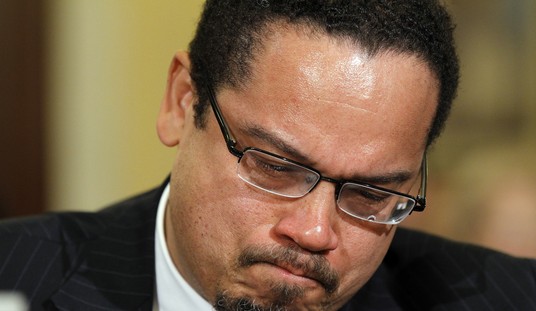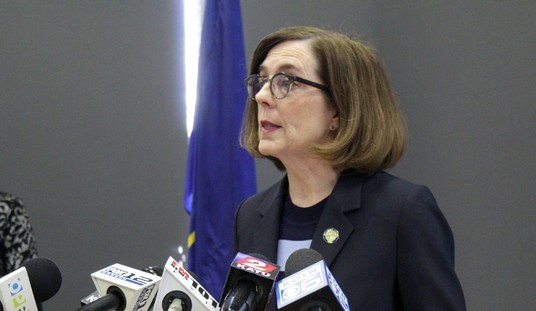Essential reading from Sean Trende about the new demographic reality at the polls. Based on his back-of-the-envelope math, there are actually two reasons why there were more minority voters as a share of the electorate this time. One, the reason everyone knows: There were more minority voters, period. Two, the reason no one guessed: If current projections hold, there were many, many fewer white voters at the polls this year than in 2008.
Had the same number of white voters cast ballots in 2012 as did in 2008, the 2012 electorate would have been about 74 percent white, 12 percent black, and 9 percent Latino (the same result occurs if you build in expectations for population growth among all these groups). In other words, the reason this electorate looked so different from the 2008 electorate is almost entirely attributable to white voters staying home. The other groups increased their vote, but by less than we would have expected simply from population growth.
Who were they? He looked at his home state of Ohio to try to guess:
Where things drop off are in the rural portions of Ohio, especially in the southeast. These represent areas still hard-hit by the recession. Unemployment is high there, and the area has seen almost no growth in recent years.
My sense is these voters were unhappy with Obama. But his negative ad campaign relentlessly emphasizing Romney’s wealth and tenure at Bain Capital may have turned them off to the Republican nominee as well. The Romney campaign exacerbated this through the challenger’s failure to articulate a clear, positive agenda to address these voters’ fears, and self-inflicted wounds like the “47 percent” gaffe. Given a choice between two unpalatable options, these voters simply stayed home.
Yeah, I always thought the goal of Team O’s multifaceted class demagoguery of Romney wasn’t so much to win white working-class votes for Obama, which may have been unwinnable, as to keep potential Romney voters home. (Ross Douthat wrote about that in August too.) If Trende’s math is right, looks like it worked like gangbusters. Another bonbon from the national exit poll:

When voters were asked the same question about Obama, 10% said he’d favor the rich versus 44% who said the middle class. That was one of Romney’s meta-problems in trying to sell himself as the “recovery” candidate, of course. He was easily cast as a stereotypical rich country club Republican, and inexplicably he never did obvious things that he could have done to fight that image. He didn’t run positive ads early, while Obama was busy tearing him down every day with attack ads. He refused to run biographical ads until the very end showing off what a warm, kindhearted guy he is. He never went after Obama systematically on the basic point that preserving the liberal dream of a ballooning welfare state will require taxes on the middle class, not just “the one percent.” And he never pushed an agenda that was aimed overtly at breaks for the middle class. His task this year was to usher in a “new” Republican Party, partly in the spirit of the 2010 tea party takeover and partly in the spirit of flushing out all the stuff under Bush that soured the country on the GOP. But apart from choosing Paul Ryan, who didn’t get nearly as much time as I thought he would to push fiscal reform, there wasn’t a lot that felt new. Essentially, voters could keep O or give the guy who sounded like the guy whom O replaced a shot. Not surprising that a lot of people shrugged and stayed home.
This didn’t help Romney either:

The economic numbers are ugly but the trends were all the right way for O, and his final job approval ended up being several points higher than Bush’s was when he won reelection in 2004. How can that be? Well, here’s something I wrote in June of last year that I’ve been thinking about since Tuesday. There was an AP poll at the time that asked voters whether it was realistic to expect significant improvement in the economy in Obama’s first two years in office or whether it would take longer than that. To my surprise, the data showed that not only did the public not expect quick improvement, the number who said they didn’t remained basically constant month after month after month. Even though we were getting further and further into O’s term, the public wasn’t getting impatient. Here was my attempt to explain why at the time:
I think it could go two ways if he doesn’t turn things around by next year. One: The public will continue to cut him lots of slack well into 2012, but as the election approaches and they realize that this will be their last chance until 2016 to change course, they’ll bail and we’ll see a rapid snowball effect among those blaming him for not fixing the economy. Or two: The public will decide that the current recession is so uniquely horrible, unlike anything since the Great Depression, that it’s unfair to expect any president to make major strides in just one term, which will have the ironic effect of partly neutralizing the economy as an electoral issue. That’s completely counterintuitive given its singular importance right now (fully 93 percent in this poll say the economy is extremely or very important to them, an all-time high), but paradoxically the worse things get, the easier it is for Obama to frame slow growth and chronically high unemployment as some sort of mega-quake or force majeure for which no one could reasonably be expected to have been prepared.
Boldface added. How’s that prediction looking today? Here’s Joel Benenson, the Obama campaign’s pollster, explaining the keys to victory in the Times this morning:
Such conventional [economic] indicators failed to capture the mind-set of the American people who always had a broader view of the nation’s economic situation and what had happened to their lives. A national survey of 800 voters conducted by our firm — not for the Obama campaign — during the final weekend before Tuesday’s vote, confirmed that a clear majority of Americans viewed this election in the context of the scale of the economic crisis we faced and the deep recession that ensued.
Two key data points illustrate why Americans were always far more open to President Obama’s message and accomplishments than commentators assumed. By a three to one margin (74 percent to 23 percent), voters said that what the country faced since 2008 was an “extraordinary crisis more severe than we’ve seen in decades” as opposed to “a typical recession that the country has every several years.” At the same time, a clear majority, 57 percent, believed that the problems we faced after the crisis were “too severe for anyone to fix in a single term,” while only 4 in 10 voters believed another president would have been able to do more than Mr. Obama to get the economy moving in the past four years.
Bill Clinton famously pushed that message at the convention too, that this economic hurricane was actually Katrina/Sandy and therefore no one could reasonably be expected to have cleaned up all the debris yet. The voters bought it, and Romney’s only real countermove — hammering O on how housing policies championed by Democrats contributed to the fiscal crisis in 2008 — never really happened.
Anyway, this is all a way to try to explain why middle-class whites might have stayed home. As further validation of Trende’s theory, a quick comparison between the 2012 and 2008 exit polls shows that, among the six income classes used to measure voters, turnout as a percentage of the total electorate increased in five of them. The only one that dropped, by a whopping five percent (36% four years ago to 31% now): Voters who earn between $50,000 and $99,999 per year, i.e. the middle class. Obama and McCain basically split that vote, but Romney had a six-point advantage this time among those who showed up. Not enough did.
Needless to say, though, none of this should be taken as reassurance that the GOP’s majority is still out there and that they only need to concentrate on turning out working-class whites next time. If you assume that the exit poll’s 59/39 R/O split among whites who voted would have also held for whites who didn’t, then Romney lost a net 1.3 million votes from those who stayed home based on Trende’s projections. That’s an awful lot, but based on the current popular vote totals, it’s still not enough to erase Obama’s popular vote advantage. In fact, the GOP has won the popular vote in a presidential election just once since 1988, and arguably that one — Bush’s victory in 2004 — was sui generis, a product of unusual dynamics after 9/11 and the invasion of Iraq. You know how Democrats regularly outnumber Republicans in polls of adults and registered voters? Well, the lesson of this election is that Obama’s organization was good enough at turning people out to make election day results look like a poll of registered voters. That’s a scary prospect for the GOP, and turning out more rural whites in Ohio won’t be enough to solve it.
Update: Pollster Bill McInturff fires back hard at Trende’s theory by insisting that, while turnout may be down a little this year, the “missing” voters can be explained very simply: They just haven’t been counted yet. In 2008, fully 9.5 million votes weren’t counted until after election day. This year, it could be as high as 9.9 million based on projection. In fact, he says, turnout in swing states was up. It’s the Sandy states, not surprisingly, where the vote went down:

Two things, though. One: Trende’s piece attempted to account for ballots that hadn’t been counted yet. He estimated that seven million were still outstanding. Even if he lowballed the number, there are still a lot of “missing” voters. Two: The exit poll data about reduced turnout among middle-class voters is what it is, no matter how many ballots are still out. I’m not sure why Sandy would have affected the middle class disproportionately, which means something else was keeping people in that bracket from the polls.
Update: Trende e-mails with a third objection to McInturff. Turnout in Ohio, the swingiest state of all, evidently was not up this year:
Ohio vote is in, less provisional ballots. That’s why I used Ohio for my article. Absentees here were counted first this year.
200K provisional ballots were cast in 2008. If as many were cast this year, it would yield about 3.35M votes in OH (since about a fifth to a quarter are typically tossed).
In 2008, 3.62M were cast. So contra McInturff’s post, turnout was down in at least one swing state not on the Atlantic coast, and by about 8% at that. Of course, Ohio’s population has also grown since 2008, if only slightly.








Join the conversation as a VIP Member